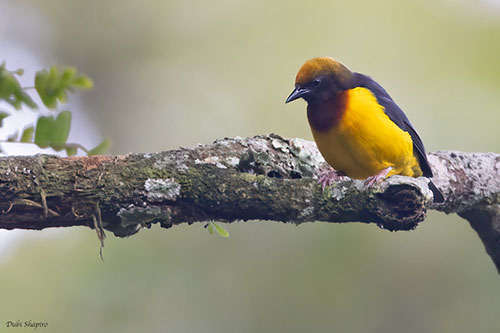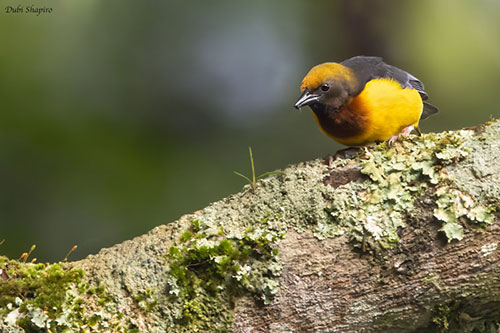
Fr: Tisserin des Usambara
Ang: Usambara Weaver
All: Usambaraweber
Esp: Tejedor de los Usambara
Ita: Tessitore degli Usambara
Nd: Usambarawever
Sd: usambaravävare
Photographer:
Dubi Shapiro
Dubi Shapiro Photo Galleries
Text by Nicole Bouglouan
Sources :
HANDBOOK OF THE BIRDS OF THE WORLD Vol 15 by Josep del Hoyo-Andrew Elliot-David Christie - Lynx Edicions – ISBN: 9788496553682
BIRDS OF AFRICA SOUTH OF THE SAHARA by Ian Sinclair and Peter Ryan - Princeton University Press Princeton and Oxford - ISBN: 0691118159
Birds of Kenya and Northern Tanzania by Dale A. Zimmerman, David J. Pearson and Donald A. Turner - Bloomsbury Publishing, 2020 – ISBN: 1472981030, 9781472981035 - 576 pages
Field Guide to the Birds of East Africa: Kenya, Tanzania, Uganda, Rwanda, Burundi by Terry Stevenson, John Fanshawe – Editeur: Bloomsbury Publishing, 2020 – ISBN: 1472986628 - 9781472986627 – 624 pages
Wikipedia, the free encyclopaedia
Usambara Weaver
Ploceus nicolli
Passeriformes Order – Ploceidae Family
INTRODUCTION:
The Usambara Mountains are situated in NE Tanzania in E Africa. They are part of the Eastern Arc Mountains, extending from Kenya through Tanzania. The Chambolo peak is the highest point at 2,289 metres of elevation.
These mountains are covered in virgin tropical rainforest. They are a centre of endemism.
The Usambara Weaver is endemic to the Usambara forests where it is rare. It is confined to forest and forest edge, and usually frequents mainly the forest canopy. It feeds on insects while foraging upside-down in tit-like action.
The breeding behaviour is unknown, but the nest resembles other nests of Ploceus species (Family Ploceidae - Fourth part), but with shorter entrance tunnel.
The population of the Usambara Weaver is declining due to forest clearing and fragmentation. The species is currently listed as Near Threatened.

DESCRIPTION OF THE BIRD:
Biometrics:
Length: 13-14 cm
Weight: 26-33 g
The Usambara Weaver adult male of nominate race, has black mantle and back. On the rump, the feathers are black with yellow edges. Both upperwing and tail are black.
On the underparts, chin and throat are dark brown. The breast is rich rufous-chestnut. Rest of underparts including flanks, belly, thighs and undertail-coverts are yellow.
On the head, forehead and crown are dull yellow to buffy-brown, blending into the olive nape. Chin, throat, lores and ear-coverts are dark brown.
The pointed bill is black. The eyes are reddish-brown. Legs and feet are pinkish-brown.
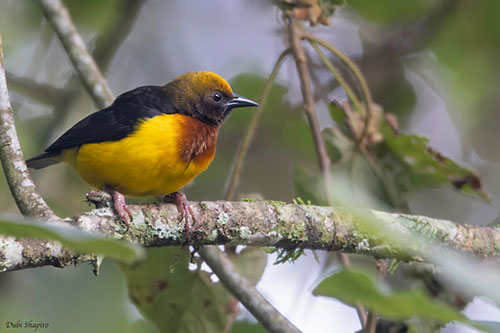
The adult female resembles male, but she has the entire head dark brown, without paler crown.
The juvenile resembles female, but forehead and crown are dull olive-brown. The throat is speckled with yellow. We can see a buffy tinge on the breast.
The eyes are grey-brown, becoming yellowish later. The bill is horn-brown.
The young male has slate-grey crown with some yellowish feathers.
SUBSPECIES AND RANGE:
The Usambara Weaver has two recognized subspecies.
P.n. nicolli (described above) is found in Usambara Mountains in NE Tanzania.
P.n. anderseni is found in NE Tanzania (Uluguru and Udzungwa Mts).
The male differs from nominate in having black with sepia-brown tinge on forehead, crown and nape, with no trace of yellow. The throat is almost black, not dark brown, and this area is more extensive than in nominate race.
The female has darker brown throat. The crown is almost black and much darker than in nominate female.
HABITAT:
The Usambara Weaver is an endangered resident of forests in E Usambara, Uluguru and Udzungwa mountains.
The species occurs from 900 to 2,000 metres of elevation.
It frequents the canopy of montane evergreen forests, but it can be seen occasionally at forest edge. It also frequents disturbed forest, plantations and cultivated areas with isolated mature trees.
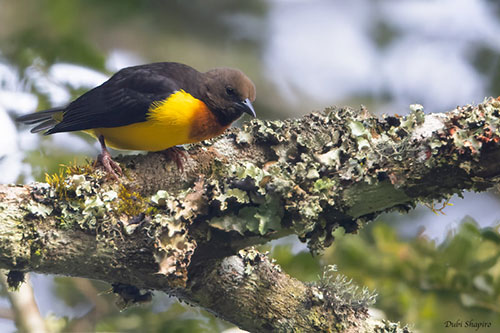
CALLS AND SONGS: SOUNDS BY XENO-CANTO
The Usambara Weaver’s call is a hard “chip” or “chak” and series of “cheek-chop-chop-chikikikik”.
We can also hear a whistled, soft song described as a high-pitched “swi-swee-ee”. But the bird also produces a rhythmic series of rising notes “swi-iri t’swi-i t’swi-i”
BEHAVIOUR IN THE WILD:
The Usambara Weaver feeds mainly on insects and larvae. It often forages in tit-like action while hanging upside-down from branches. It gleans insects in trees, from branches covered in epiphytes. It may occasionally tear pieces of bark and probe lichen for hidden prey.
This species is usually seen alone, in pairs or in mixed-species flocks, searching for insects and foraging in the upper canopy.
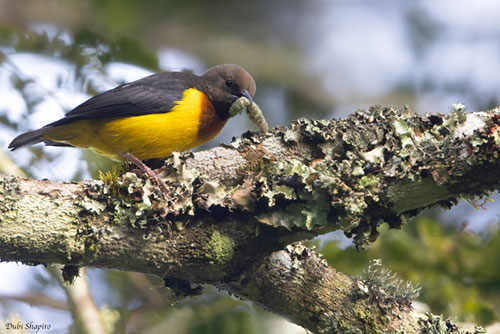
The breeding behaviour of the Usambara Weaver is unknown. The nest is typical of Ploceus species (Family Ploceidae - Fourth part), but with shorter entrance tunnel.
The Usambara Weaver is probably resident in Usambara Mountains.
The flight is agile while the bird is foraging, but it does not fly over long distances.
REPRODUCTION OF THIS SPECIES:
The Usambara Weaver builds a nest in tree, a typical Ploceus nest made with dry tendrils and creepers. However, the entrance tunnel is shorter and with flared opening.
Both adults build the nest. They are probably monogamous.
One nest in tree was observed in mid-April in Tanzania. It looked like a cluster of lichens attached to the vegetation.
No more information.
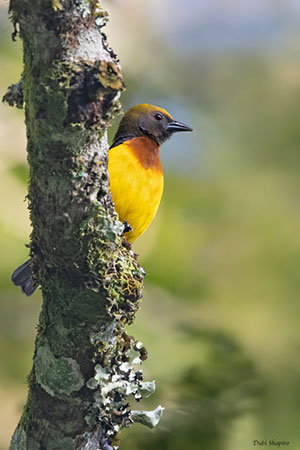
PROTECTION / THREATS / STATUS:
The Usambara Weaver has restricted range in which it is affected by habitat loss through forest clearing and fragmentation for agriculture expansion, plantations and timber extraction.
The main montane forest block in the Ulugurus is protected by inaccessible terrain. But the lower slopes are often cleared and under increasing pressure for harvesting for firewood and construction, due to increasing population.
Broad tourist trails allowing better access by hunters and mammalian predators are also a threat for this species. The tourism has increased since the 1990’s with now 30-40% of the forest accessible to tourists.
Pressure is also increasing on the Udzungwas, although this area is not immediately threatened.
The population is roughly estimated at 600/1,700 mature individuals. It is suspected to be declining regularly.
The Usambara Weaver is currently listed as Near Threatened.
